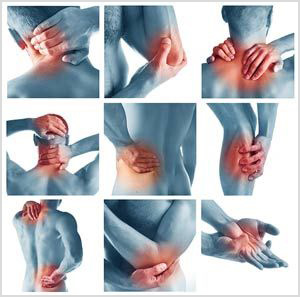|
Anything that is concerned with muscles, ligaments and joints is considered orthopedic. Disorders are ailments, injuries or diseases that cause knee problems, whiplash, dislocated shoulder, torn cartilages, foot pain and fibromyalgia. These are only a few of the known orthopedic disorders. There are as many treatments for orthopedic disorders as there are problems and injuries in the muscles, ligaments and joints.
 Most common Orthopedic Problems Most common Orthopedic Problems
There are so many orthopedic problems it is almost impossible to list them. There are a few, however disorders and conditions are common and you will probably experience one or several of them at some point in your life.
1) Arthritis is a rheumatic disease that has symptoms of pain, limited movement, swelling and pain in connective tissues. There are almost 50 million people in the United States who experience some type of arthritis. Arthritis is chronic or rarely changes and can progress slowly, and unfortunately many of the causes of arthritis are unknown.
2) Osteoarthritis is a degenerative joint disease that middle aged and older adults experience. The joint cartilage breaks down as you age and it can occur in the hands, knees, spine or hips. Often you will hear osteoarthritis termed as degenerative arthritis or degenerative joint disease. It is very painful and one of the more common forms of orthopedic problems seen in doctor’s offices.
3) Rheumatoid arthritis is a disease listed in the orthopedic section that causes sever inflammation of the joints. The inflammation is so severe that the functioning of the extremities becomes severely limited. Lumps generally form over the small joints and movement plus appearance is hampered. Adult rheumatoid arthritis last a lifetime and progressively gets worse. As an autoimmune disorder, rheumatoid arthritis occurs when the body’s immune system attacks its own healthy tissues and cells. It not watched, rheumatoid arthritis can also attack the heart and lungs.
4) Fractures are definite orthopedic problems. Open fractures or compound fractures include there bone protruding through the skin or a wound that exposes the bone through the skin. A closed fracture or simple fractures is a broken bone seen, but not exiting the skin through a wound. Greenstick fractures are incomplete fractures. A small portion of the bone is broken; other fractures are straight line fractures across the bone and spiral fractures are actual breaks that spiral around the bone.
5) Low back pain in an orthopedic condition that affects one out of ten people. Low back pain presents from mild and annoying to persistent and severe. If you have pain in your lower back your mobility is restricted and normal functioning is disturbed.
6) Neck pain can come from injuries or damage to the muscles and ligaments of the neck, a herniated cervical disk or arthritis. Tumors and congenital abnormalities of the vertebrae can cause severe neck pain. Twisting and straining is also a nick problem and neck pain can also cause headaches and general aching in shoulders and the back.
Every bone, tissues and tendon in the body is a part of the skeleton system and a potential contributor to orthopedic conditions. There are ways to prevent some of the minor injuries, and the best ways to prevent injuries to your bones and tendons is to keep up an exercise plant. Stretching, running walking and aerobic helps not only the cardiovascular system but your bones and joints.
|